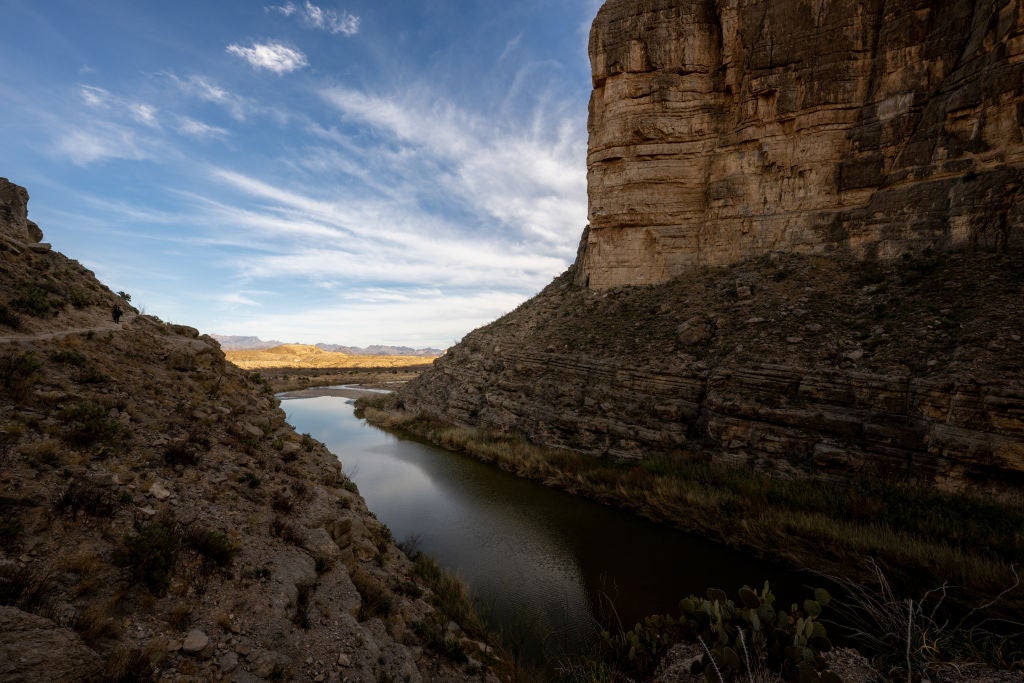Big Bend does not see many visitors, but it has a high relative death rate.
The Rio Grande flows through the Santa Elena Canyon in Big Bend National Park. Brandon Bell/Getty Images
Published September 9, 2025 09:08AM
In August 2024, the National Park Service released a trove of data about deaths at NPS sites over a 17-year period. Since then, a growing number of independent media sites, nonprofit groups, and even travel companies have published reports on the deadliest parks by comparing mortality data with visitation numbers for each park.
The latest report, reportedly compiled by travel company Antelope Canyon Tours, assesses the death rate at NPS sites that feature prominent canyons. According to Antelope Canyon Tours, the deadliest U.S. canyon park isn’t the Grand Canyon or Zion. It’s not the Black Canyon of the Gunnison, Canyonlands, or even Yellowstone.
It’s Big Bend National Park in Texas, which also happens to be our columnist’s favorite national park.
Since 2014, 30 people have died in the remote 800,000-acre park, which encompasses sprawling canyons and deserts along the U.S.-Mexico border. That’s roughly six deaths per million visits, which Antelope Canyon says is the most of any of the 19 canyon parks. Although other, more popular parks like the Grand Canyon have far more overall fatalities (164 reported since 2014), Big Bend had more deaths per capita than any other national park canyon.
What makes Big Bend so dangerous? It’s hard to say.
For example, in Sequoia & Kings Canyon National Park, home to 14,505-foot Mount Whitney and other iconic peaks, roughly half of all deaths in the past decade were due to falls. But the majority of the deaths in Big Bend were either classified vaguely as “medical emergencies” or hyperthermia, when the body overheats. Only two individuals died in falls.
Big Bend’s immense size—it’s one of the largest in the contiguous U.S.—remote location, and extreme climate create a trifecta of risks. Daytime summer temperatures in the park regularly reach above 100 degrees Fahrenheit. This heat, combined with an arid desert landscape that offers little to no shade, can quickly lead to dehydration and hyperthermia.
Cell service is poor to nonexistent in many areas of the park, and the NPS notes that “many GPS and app mapping services do not work well” inside park boundaries. These services may “recommend incorrect [or] dangerous roads and itineraries,” and visitors should “be prepared to use paper maps to navigate.”
Unlike many other national parks, Big Bend is also hundreds of miles from a major metropolitan area. The nearest major city is El Paso, Texas, roughly 300 miles away. This remoteness means Big Bend is often crowd-free, with around 500,000 annual visits. It also means that medical assistance can be hours away, a critical factor when dealing with a time-sensitive emergency like a heart attack or severe heatstroke. Self-reliance is crucial.
Overall, Lake Mead National Recreation Area, located outside Las Vegas, records the most overall deaths in the NPS system, according to data published by Statista. Lake Mead isn’t a national park, but as a national recreation area, it is managed by the NPS. Approximately 19 people die every year in Lake Mead, primarily from drowning, as the lake is popular for boating, swimming and paddling. In overall deaths, Lake Mead is followed by the Grand Canyon and Yosemite, and then the Blue Ridge Parkway in Virginia and North Carolina, which sees most of its deaths from traffic accidents. (Notably, these parks are also among the most heavily visited.)
However, in a blog on the topic, the NPS refutes the idea that one park is more deadly than any other.
“There is not a ‘most dangerous national park.’ Parks have hazards. Hazards are potential sources of harm. Some hazards, like wildlife, rocky terrain, heat, high elevation, rip currents, naturally exist in the environment at the park,” wrote the NPS.
The Service adds that when the national park system’s mortality data is used to compile rankings of the most dangerous parks, “it can lead to a fundamental misunderstanding of the complexities of risk associated with the multitude of park experiences.”
“Rather than asking, ‘what is the most dangerous park,’ we think the better question you should ask is: What hazards do I need to prepare for so I have a fun and injury-free national park visit?” says the NPS.
To stay as safe as possible, the agency recommends planning your national park trips well in advance and keeping an eye out for these common hazards:
- Severe weather like lightning, blizzards, extreme heat, or cold temperatures
- Wildland fires
- Geologic activities like volcanoes, hot springs, rockfalls, and geysers
- Water hazards like rip currents, flooding, rapids, and cold water temperatures
- Terrain features like steep slopes, sheer cliffs, waterfalls, sinkholes, and high elevations
- Condition of walking surface, such as gravelly, rocky, wet trails, or uneven steps in historic structures


